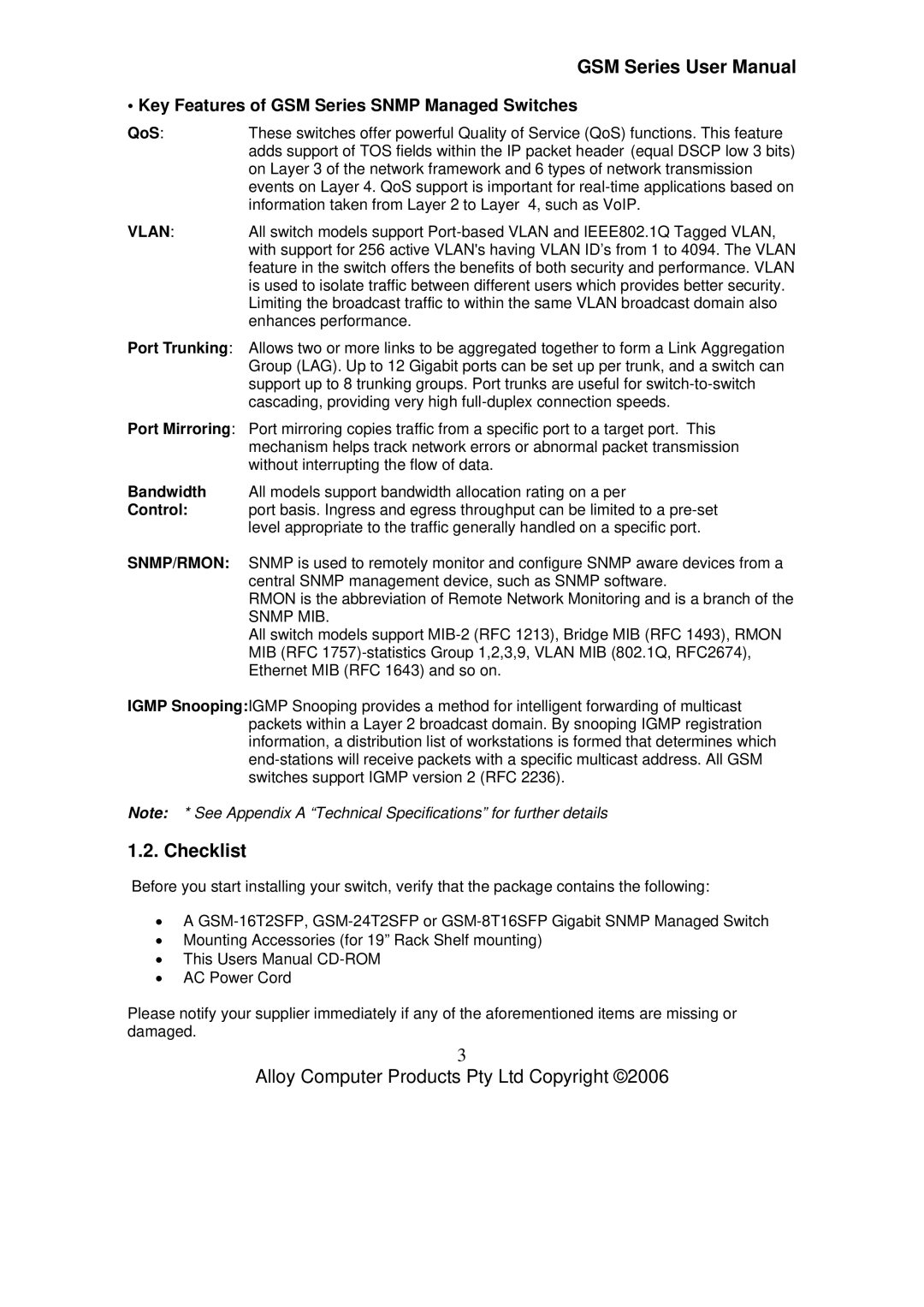GSM Series User Manual
• Key Features of GSM Series SNMP Managed Switches
QoS:These switches offer powerful Quality of Service (QoS) functions. This feature adds support of TOS fields within the IP packet header (equal DSCP low 3 bits) on Layer 3 of the network framework and 6 types of network transmission events on Layer 4. QoS support is important for
VLAN: All switch models support
Port Trunking: Allows two or more links to be aggregated together to form a Link Aggregation Group (LAG). Up to 12 Gigabit ports can be set up per trunk, and a switch can support up to 8 trunking groups. Port trunks are useful for
Port Mirroring: Port mirroring copies traffic from a specific port to a target port. This mechanism helps track network errors or abnormal packet transmission without interrupting the flow of data.
Bandwidth All models support bandwidth allocation rating on a per
Control: port basis. Ingress and egress throughput can be limited to a
SNMP/RMON: SNMP is used to remotely monitor and configure SNMP aware devices from a
central SNMP management device, such as SNMP software.
RMON is the abbreviation of Remote Network Monitoring and is a branch of the
SNMP MIB.
All switch models support
IGMP Snooping:IGMP Snooping provides a method for intelligent forwarding of multicast packets within a Layer 2 broadcast domain. By snooping IGMP registration information, a distribution list of workstations is formed that determines which
Note: * See Appendix A “Technical Specifications” for further details
1.2. Checklist
Before you start installing your switch, verify that the package contains the following:
•A
•Mounting Accessories (for 19” Rack Shelf mounting)
•This Users Manual
•AC Power Cord
Please notify your supplier immediately if any of the aforementioned items are missing or damaged.
3
Alloy Computer Products Pty Ltd Copyright ©2006
